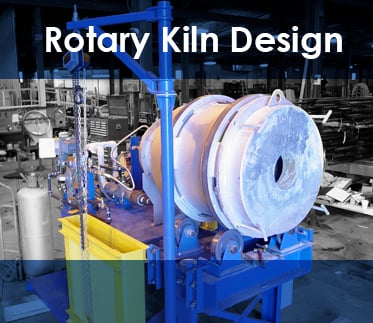In the thermal processing industry, rotary kilns are used to cause chemical reactions or state changes in varying materials. As discussed previously in Direct Fired Rotary Kilns vs. Indirect Fired Rotary Kilns: What’s the Difference, while direct fired rotary kilns and indirect fired rotary kilns use similar thermal processing principles, they are each beneficial in different applications. In this three part mini-series, we will look at some of the situations in which an indirect fired rotary kiln is a more efficient choice.
There is an array of applications in which a hazardous component may be absorbed on an inert solid substrate. An example of this is spent activated carbons, used to absorb an undesirable waste component from a liquid or gaseous stream. In such cases, the “spent,” or used up carbon can be activated for reuse through means of an indirect fired rotary kiln. The used up carbon can be held at high temperatures and the absorbed component will volatilize and effectively be desorbed from the carbon, making the carbon again ready to absorb a hazardous component.
Following desorption, the volatilized waste is then evacuated from the system via an imposed draft. This off-gas from the indirect fired rotary kiln would be laden with a hazardous waste component that could then be either condensed in high purity, or incinerated as a concentrated vapor stream. This operation of reactivating a solid substrate could be performed in a direct fired rotary kiln, but the off-gas burden would be significantly increased. Depending on the regulations placed on the volatilized compounds, the treatment of this off-gas could be quite costly.
Conversely, the goal of some processes is to recover a high value volatile component from a somewhat valueless solid carrier. As an example, consider the thermal separation of oil from oil shale. Such an application is likely best suited in an indirect fired rotary kiln. As in the case of combustible materials, a direct fired rotary kiln can be carefully designed to perform the separation, but the load on separation equipment, such as a condenser, becomes greatly increased by undesired tramp air. The cost associated with these ancillary separation devices can far exceed the cost of the heat transfer vessel. By processing such a material in an indirect fired rotary kiln, the desired volatile product is highly concentrated and does not burden the recovery equipment with needless tramp air.
Another highly promising application is in using an indirect fired rotary kiln to effectively distill valuable oils from low value wastes such as scrap tires, oil saturated soils, and oil drilling wastes (cuttings).
Other typical indirect fired rotary kiln applications include chemical laden soils, absorbents, tank wastes, and other inert substrates. As these examples indicate, there are countless applications wherein an indirect fired rotary kiln may result in a more cost effective system overall. The developer of a thermal process must take into account the cost of all required ancillaries, operating cost, product quality requirements, and several other variables as opposed to merely the cost of the primary heat transfer device. When evaluating an overall system approach, the designer must also take into account operating cost factors such as the cost of fuel, cooling water, power, instrument air, the air quality restrictions, and the cost of off-spec product.
In the next part of our mini-series, we will examine the benefits of using an indirect kiln when processing needs are best conducted in an inert environment.
For more information on indirect fired rotary kilns, contact us today!



